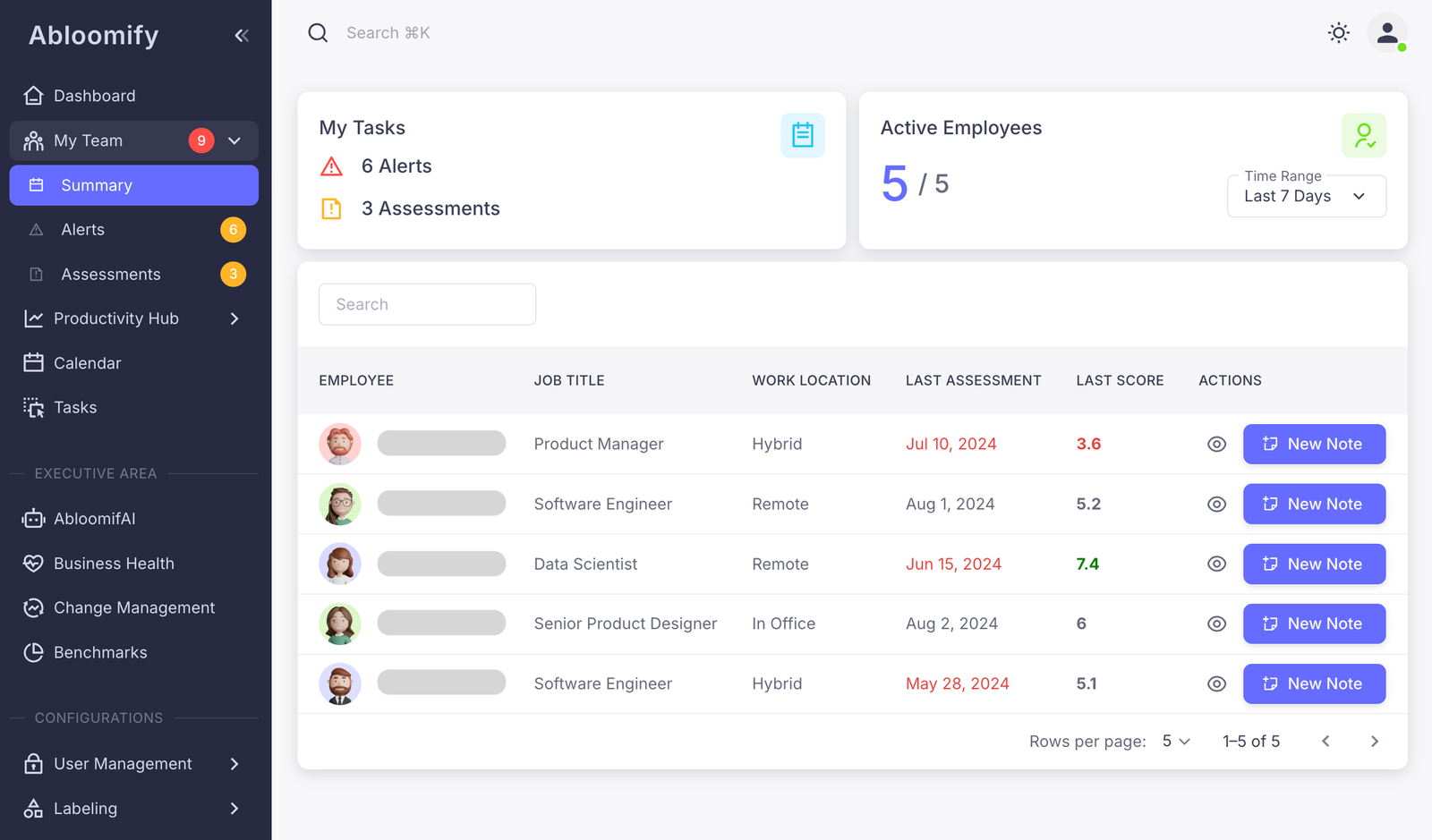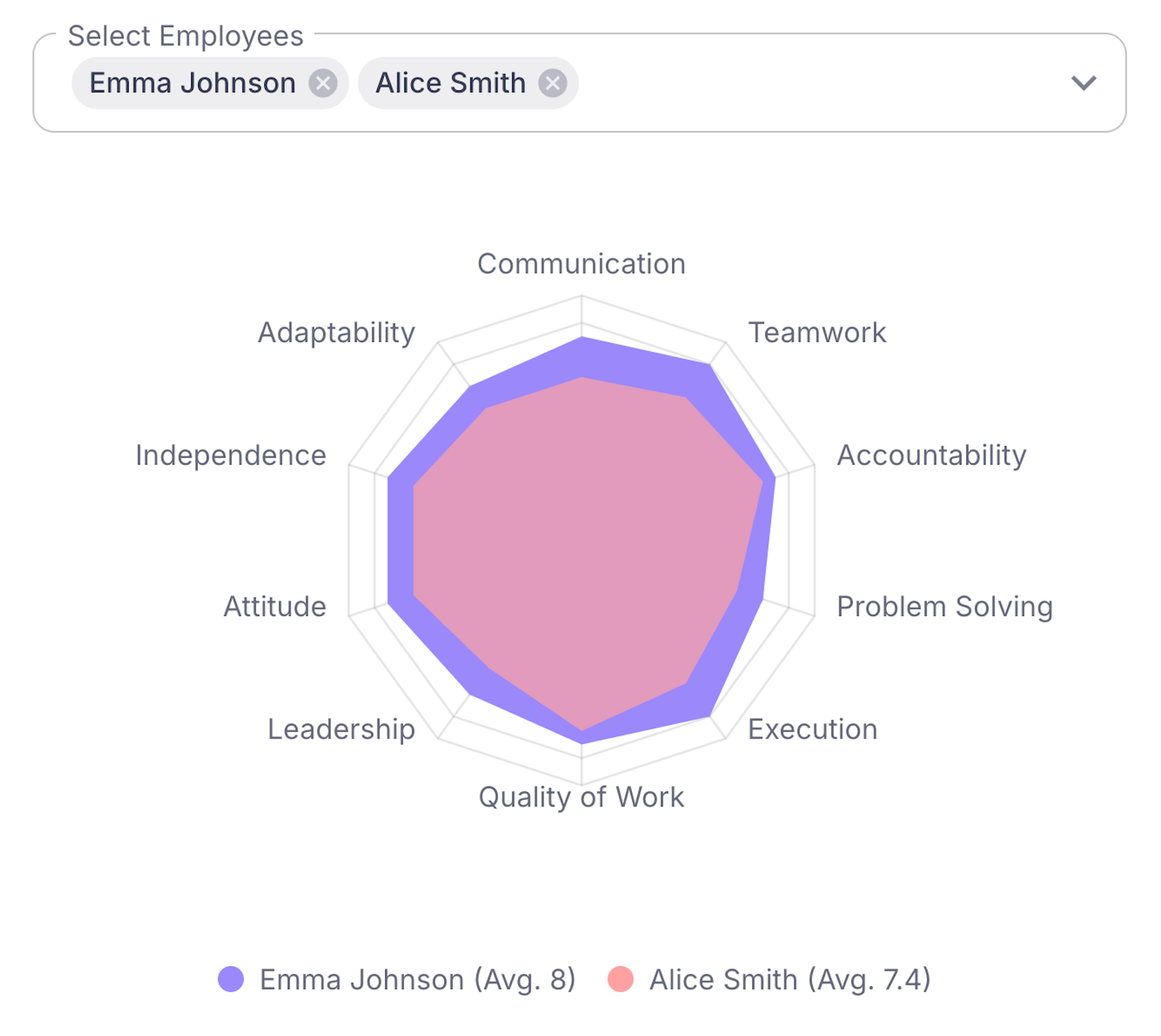Effective performance management remains crucial for tech companies striving for sustainable growth and workforce optimization. This article explores various strategies and tools to improve performance management, equipping leaders with actionable insights for building high-performing teams.
Understanding Current Challenges
Tech companies face numerous challenges in performance management. Aligning goals is often difficult, with departments not always heading in the same direction. A clear, unified vision is essential for streamlined operations and innovation.
Employee engagement is another hurdle. Tech employees frequently encounter fluctuating priorities. This can lead to disengagement and hinder both personal and organizational productivity.
Moreover, skill gaps are a growing concern. Rapid technological advancements mean skills must be regularly updated. Traditional training methods often fall short, as they can’t keep pace with these changes.
Why do traditional performance management methods often fail?
- Time-consuming processes: Annual reviews are outdated and lack relevance in dynamic environments.
- One-size-fits-all approach: Not all employees benefit from the same metrics and evaluations.
- Lack of real-time feedback: Employees and managers miss opportunities for immediate course corrections.
These failings impact growth and productivity significantly. Without a coherent strategy for aligning goals, engagement, and skill development, companies risk stagnation. Tech companies, in particular, need agile and adaptive management strategies. Performance metrics should evolve alongside the organization.
Tools and platforms are emerging to tackle these issues, as explored in the subsequent chapter. For more insights on workforce optimization, explore harnessing AI to optimize workforce performance. By addressing these core challenges, tech companies can position themselves for sustainable growth and success.
The Role of AI in Performance Management
AI is reshaping performance management with precision and impact. Leveraging AI tools can transform how tech companies assess and enhance employee productivity. Here’s how it’s making a difference:
- AI-Powered Assessments: Continuous AI assessments allow managers to draw insights from patterns rather than sporadic evaluations. This creates a real-time feedback loop that helps address performance gaps quickly.
- Productivity Alerts: These alerts signal managers when team productivity spikes or dips. By identifying these trends, organizations can intervene timely and strategically.
- Feedback Systems: AI-driven feedback platforms collect data from multiple sources, ensuring balanced and fair evaluations. This democratizes feedback, allowing peers to contribute valuable insights.
An AI tool not only aggregates performance data but also highlights actionable insights for management. For example, it might flag a team’s workload imbalance or suggest areas for skill development. By analyzing this data, leaders can make informed decisions that boost employee engagement and retention.
Platforms are emerging as pivotal players, bringing together vast arrays of data into actionable intelligence. These platforms enhance strategic decision-making by ensuring all performance insights are data-driven.
Organizations that integrate AI into their performance management framework are better equipped to nurture high-performing teams—ready to tackle the challenges ahead. If you’re exploring AI-driven productivity transformation, consider checking out workforce analytics for AI-driven productivity transformation to deepen your insights.
Building High-Performing Teams
Creating high-performing teams in tech requires a blend of strategic planning and leveraging advanced tools. When companies build a framework that continually assesses and develops team capabilities, they set the stage for sustained efficiency and growth.
Using AI tools can significantly enhance team performance. Such tools can help balance workloads by predicting task durations and reallocating resources dynamically. This prevents burnout and ensures every team member contributes meaningfully. AI also aids in succession planning by identifying potential talent gaps and recommending suitable candidates for development. This pipeline strategy ensures that leaders are ready to fill key roles as businesses scale.
Skill development is another area where AI shines. AI-driven platforms can assess current skill levels and suggest targeted training plans, ensuring continuous learning and growth. By implementing these tools, organizations ensure that their workforce is constantly adapting to industry needs.
To benefit from a performance management framework, consider:
- Regularly evaluating team dynamics and adjusting roles for optimal collaboration.
- Instituting clear, data-backed performance metrics aligned with company goals.
- Fostering an environment of open feedback and continuous improvement.
Such a framework not only drives productivity but also aligns individual growth with organizational objectives. For further insights on enhancing team performance, you can explore resources on performance management for software companies. This approach ensures that teams not only meet but exceed expectations, positioning the company for sustained success.
Driving Engagement and Reducing Burnout
Increasing employee engagement and reducing burnout are crucial for sustaining high-performing teams. Personalized performance assessments and productivity alerts are powerful methods to achieve this balance. Here’s how:
- Use AI-driven analytics to monitor employee performance and behavior.
- Identify patterns that may indicate disengagement or stress.
- Alert management of potential problem areas for swift intervention.
By leveraging AI, organizations can proactively address issues before they escalate. This system can identify early warning signs, such as decreased output or less collaboration in team environments. With these insights, leadership can act swiftly:
- Engage in one-on-one discussions to understand personal challenges.
- Adjust workloads or project assignments based on individual capabilities.
- Promote flexibility through hybrid work models where possible.
Personalized performance assessments are not just about metrics. They involve understanding each employee’s unique strengths, weaknesses, and preferences. Creating custom development plans can foster a sense of ownership and motivation, reducing burnout over time.
To further enhance success, consider employing transparency in goal-setting. This means aligning individual contributions with broader company goals, making the work more meaningful. Engaging employees in this way not only bolsters their productivity but also strengthens their commitment to the organization.
For more strategies on transforming performance management, check out transforming performance management strategies for 2025. These methods are vital for creating an environment where employees thrive, reducing turnover and increasing innovation.
Optimizing Remote and Hybrid Workforces
Managing remote and hybrid teams presents unique challenges. However, with the right strategies, these can be transformed into opportunities. Ensuring effective communication is vital. Utilize platforms that offer real-time interaction and provide an integrated workspace. They help teams connect irrespective of location.
Successful workload distribution starts with clarity. Define roles and responsibilities clearly to avoid overlap and confusion. Implement tools that allow for transparent task allocation and progress tracking. A well-distributed workload keeps the momentum going and alleviates pressure on individual team members.
Flexibility is another crucial factor. Tech companies should adopt flexible scheduling and understand that productivity doesn’t rely on clocking hours. It’s about delivering results. Encourage teams to maintain balance and leverage performance analytics to support decision-making. An informed approach enhances productivity and engagement.
Here are some steps to optimize remote and hybrid workforces:
- Adopt communication platforms that foster collaboration and keep everyone on the same page.
- Use project management tools that clarify tasks and timelines.
- Implement strategies for flexibility, focusing on outcomes, not just processes.
By aligning these practices with performance management, tech companies can create a thriving work environment that supports flexible arrangements. For deeper insights into leveraging AI for productivity and workforce management, consider exploring AI strategies for remote work success. These tools and techniques resonate with both remote and hybrid settings.
Integrating Change Management
Effective change management is pivotal for tech companies striving to adapt and excel. It involves careful planning, clear communication, and real-time feedback. Leveraging technology can significantly enhance the efficacy of this process. Software that tracks project progress and employee feedback in real time helps identify bottlenecks early. This allows for swift adjustments, ensuring minimal disruption and resource waste.
There are several tools available for managing and measuring the impact of organizational changes:
- Project management software to organize and prioritize action items, providing transparency for all stakeholders.
- Feedback platforms to gather employee insights and pulse-check their sentiment throughout transitions.
- Analytics tools to assess performance shifts and resource allocations, offering data-driven insights into optimization areas.
Integrated change management systems maintain alignment with broader business objectives. They ensure everyone is informed and equipped to respond to shifts effectively. This approach not only minimizes confusion but also maximizes engagement. By incorporating these tools, tech companies can unlock smoother transitions and sustain momentum towards their strategic goals. Measuring the impacts effectively necessitates using a comprehensive approach that goes beyond mere performance metrics. It should weave in employee satisfaction and process efficiency.
Implementing change comprehensively with a forward-thinking mindset is essential. To explore how to optimize workforce performance and integrate change management effectively, visit the Harnessing AI to Optimize Workforce Performance page on Abloomify.
Ensuring Privacy and Trust
Performance management tools are powerful allies in the quest to optimize company efficiency, but they must be wielded with caution. The data these tools handle are sensitive, often encompassing employee productivity metrics and personal information. This makes privacy a top priority.
A privacy-first approach begins with transparency. Employees must be informed about what data is being collected and how it will be used. Providing clear communication helps in reducing mistrust and fosters a collaborative environment.
To maintain privacy while offering essential insights, data aggregation is key. Instead of drilling down into individual performance metrics, group data into broader categories. Aggregated data provides trends and insights without compromising individual privacy. This kind of data lets management see the bigger picture while safeguarding personal information.
Here’s how a privacy-first approach works:
- Anonymous Data Collection: Remove identifiers to protect individuals.
- Clear Data Policies: Explain how data will be handled, stored, and who can access it.
- Secure Platforms: Use advanced security measures to prevent unauthorized access.
- Regular Audits: Conduct audits to ensure compliance with privacy standards.
By following these guidelines, companies can leverage performance management tools effectively. They offer critical insights while upholding trust—an essential component in fostering a positive company culture. For those looking for a deeper dive into performance management strategies, consider reading Performance Management for Software Companies.
Embarking on Your Performance Management Journey
Embarking on the journey to redefine performance management is a necessity for tech leaders aiming for a data-driven and employee-centric future. Effective performance management involves clear communication, regular feedback, and leveraging technology to optimize outcomes.
The first critical step is fostering an environment where open and honest feedback is the norm. Encourage a culture where individuals can express their thoughts and have meaningful discussions. This transparent communication forms the backbone of any successful performance system.
Next, focus on measurable objectives that align with organizational goals. Set SMART (Specific, Measurable, Achievable, Relevant, Time-bound) goals that provide a clear roadmap for every team member. This ensures alignment between personal aspirations and business objectives.
Utilize technology to facilitate this process. Adopt platforms that offer comprehensive analytics to track progress and insights. These tools should integrate seamlessly with existing systems, promoting efficiency without adding unnecessary complexity. Engage with employees frequently through regular check-ins to maintain motivation and dedication to their goals.
Actionable steps for tech leaders:
- Establish a feedback-rich environment supported by robust communication channels.
- Implement SMART objectives for clear goal alignment.
- Leverage technology for data-driven insights.
- Conduct regular progress assessments and recalibrate if necessary.
Consider how workforce analytics can support and enhance these efforts by visiting Unlocking the Power of Workforce Analytics for insights.
The time to act is now. Transform your performance management strategy by adopting data-driven and employee-first practices. Contact Abloomify for a consultation to start your transformation journey.
Final words
Improving performance management is essential for tech companies seeking growth and efficiency. Embracing AI tools and actionable insights creates resilient and high-performing teams. By leveraging platforms like Abloomify, leaders can make informed decisions, maintaining a productive and engaged workforce. Take action today and enhance your team’s potential.



